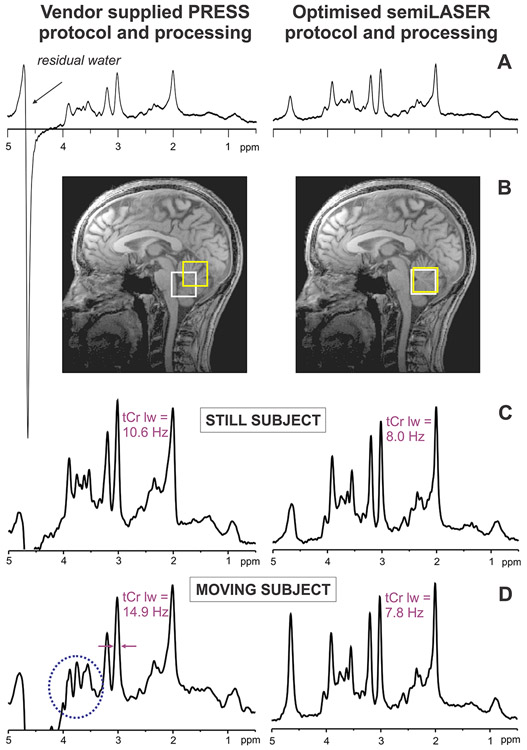Figure 2.
Comparison of vendor supplied MRS implementation of PRESS vs. an advanced in-house protocol using semi-LASER (79) and improved water suppression, shimming and data processing on a 3 T MRI system. Spectra (TE = 30 ms, TR = 5 s, 64 transients) were acquired from the same voxel in the cerebellar vermis of a healthy volunteer. A) Water was suppressed by ~150-fold by the CHESS sequence in the PRESS protocol and ~4500-fold by the VAPOR scheme (29) incorporated into the semi-LASER sequence. B) CSD for resonances with a chemical shift difference of 3 ppm is 36-39% with the PRESS sequence vs. 6% with the semi-LASER sequence in the two dimensions shown. C) Narrower linewidths (shown for the tCr signal) are obtained with FASTMAP shimming (18) in conjunction with single shot frequency & phase correction in the semi-LASER protocol vs. product shimming and signal averaging in the PRESS protocol in the absence of motion during scanning. D) Small amount of motion (few degrees in z such that the cerebellar volume-of-interest was still acceptable at the extremes of motion) further degrades linewidths and generates unwanted coherences that are not removed with phase cycling in the PRESS protocol (highlighted by the circle), while spectral quality is unchanged, with an acceptable water residual in the semi-LASER protocol thanks to artifact-free single shots and frequency & phase correction of individual shots.

